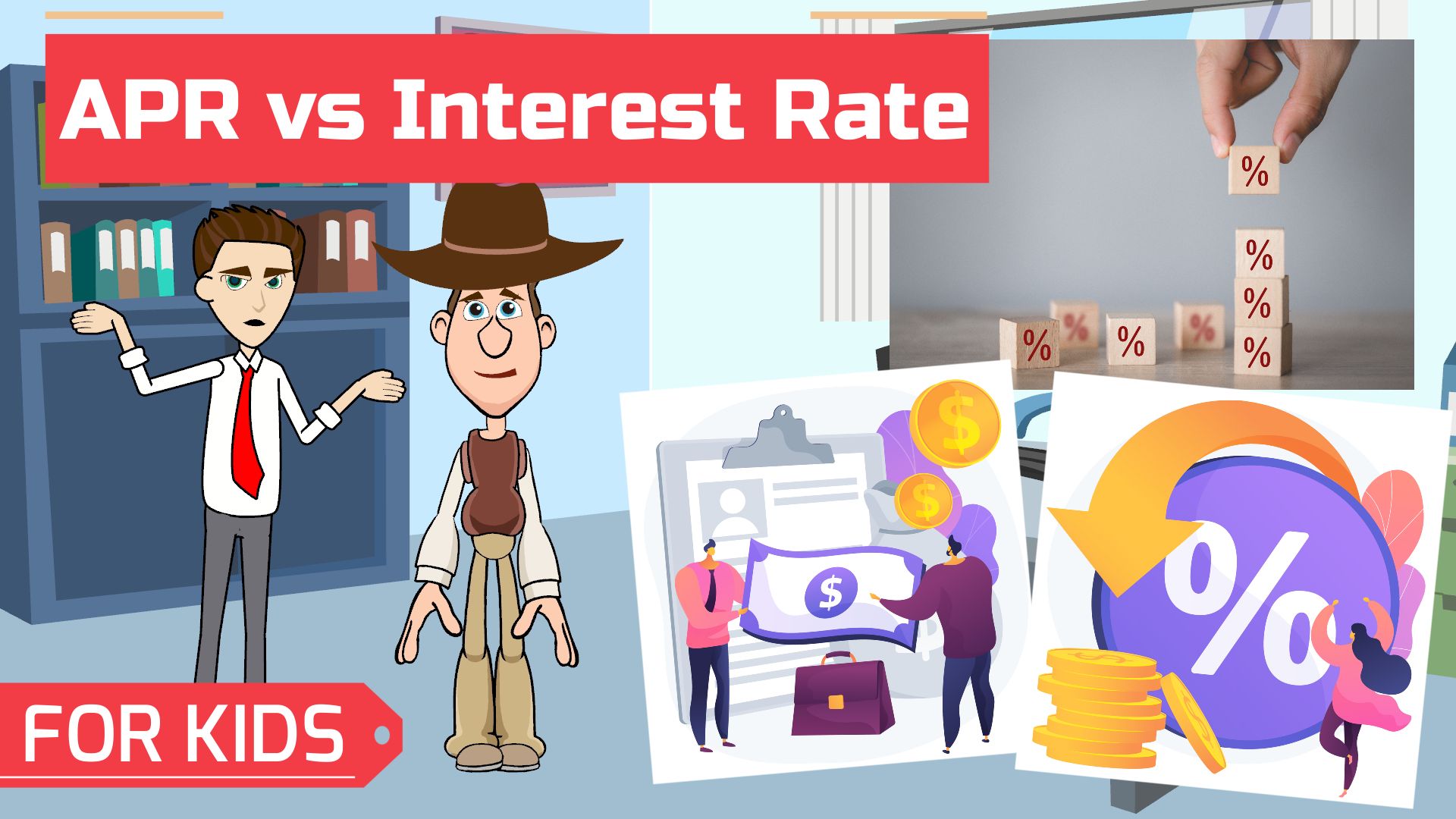Introduction to APR vs Interest Rate for Kids and Teens
This video does an Annual Percentage Rate or APR vs Interest Rate comparison in a simple, concise way for kids and beginners. It could be used by kids & teens to learn about APR and interest rate, or used as a money & personal finance resource by parents and teachers as part of a Financial Literacy course or K-12 curriculum.

Suitable for students from grade levels:
- Kindergarten
- Elementary School
- Middle School
- High School
The topics covered are:
- What is interest rate
- What is APR or Annual Percentage Rate
- Annual Percentage Rate vs Interest Rate: Differences
- APR vs Interest Rate: Which is better
What is interest rate?

Interest rate is the extra amount paid by the borrower to the lender for providing a loan, expressed as a percent.
Interest rate is usually quoted per year, but sometimes it could be quarterly or monthly.
Interest rates can be fixed or variable through the life of the loan.
What is APR or Annual Percentage Rate?
APR or Annual Percentage Rate is the cost of borrowing per year represented as a percentage. In addition to the interest rate, APR includes fees and other costs of the loan.
Lenders are required to disclose the loan’s APR before signing the contract with the borrower.
What are some of the differences between interest rate and APR?
Annual Percentage Rate is always higher than the regular Interest Rate. This is because it is calculated by adding fees and other costs of the loan to the regular interest rate.
Another difference is that the lender is free to represent the interest rate on a loan as a monthly or quarterly rate, making it appear more appealing, whereas APR always refers to the cost of borrowing per year.
Also, APR is only associated with loans whereas interest rate is also applicable to deposits, where banks or credit unions pay interest on the money deposited in your account.
Which is better: APR or Interest Rate? When should each be used?

Both APR and interest rate are used for different loans, like Mortgages, Personal Loans, Student Loans, and Credit Cards.
When figuring out how much your monthly payment would be, you should look at the interest rate. However, Annual Percentage Rate is preferable when comparing loans, as it is a more accurate reflection of the total cost of borrowing.
But you need to keep in mind that lenders may not include all fees in the APR, making it difficult for consumers to compare loans across lenders.
Download Transcript: Ideal for Use by Teachers in their Lesson Plan to Teach Kids & Teens
Podcast: Annual Percentage Rate APR vs Interest Rate Comparison
Fun, informative and concise episodes by a 10-year old, breaking down complex financial concepts in a way that kids and beginners can understand. Episodes cover personal finance topics like saving, investing, banking, credit cards, insurance, real estate, mortgage, retirement planning, 401k, stocks, bonds, income tax, and more, and are in the form of a conversation between a cowboy (a finance novice) and his friend, a stock broker. Making finance your friend, only at Easy Peasy Finance.
A little bit about me: I have been fascinated with the world of personal finance since I was 6! I love to read personal finance books, and keep myself updated on the latest by reading various personal finance magazines. My friends often ask me questions about finance because they find it complex and intimidating. That’s what inspired me to start my YouTube channel called Easy Peasy Finance when I was 8, and this podcast 2 years later.
A comprehensive APR vs interest rate comparison: What is interest rate, What is APR or Annual Percentage Rate, What are some of the differences between interest rate and APR, Which is better: APR or Interest Rate, and more.
Show notes and transcript at: https://www.easypeasyfinance.com/apr-vs-interest-rate-comparison-for-kids/


